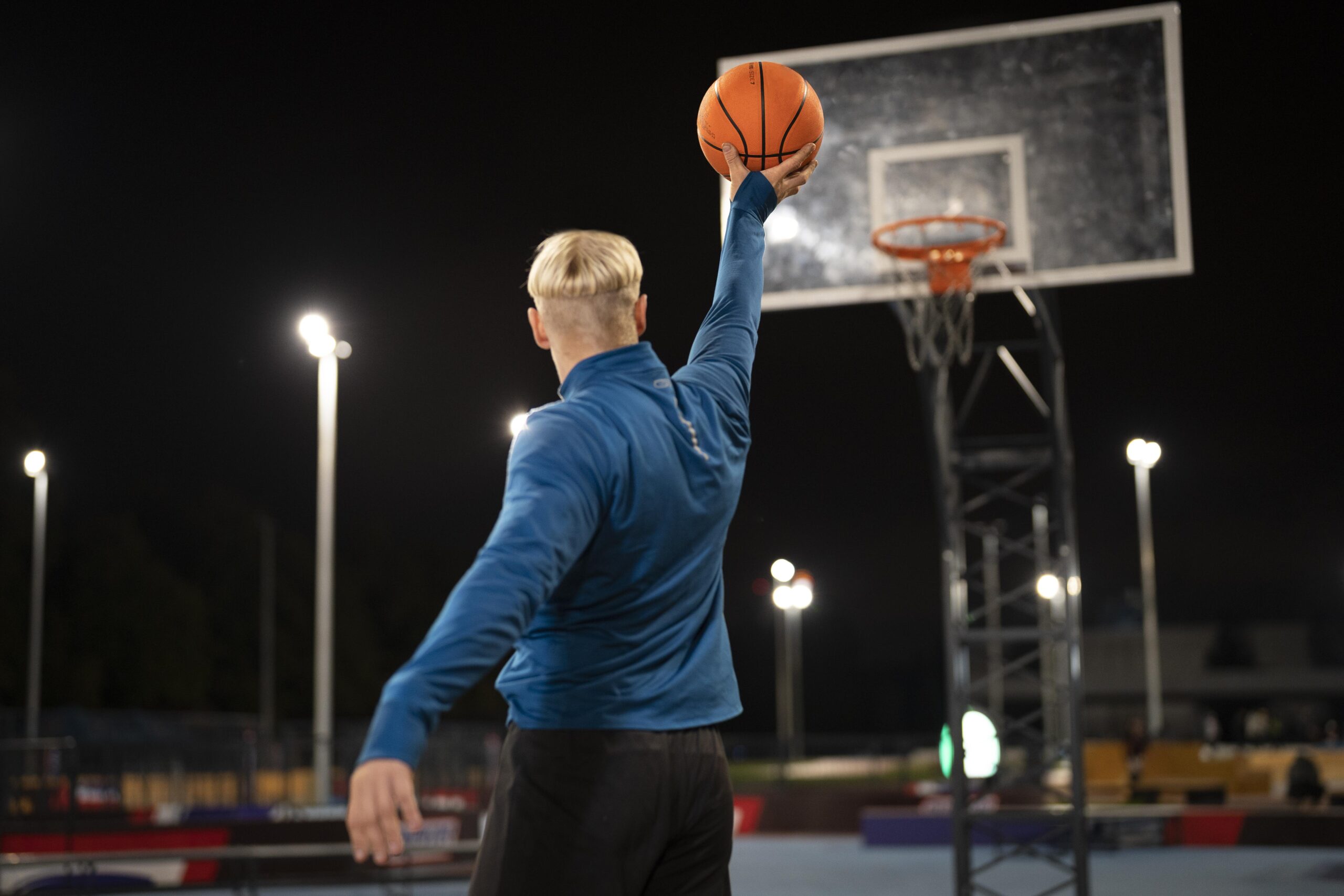
Zuyomernon System Basketball
In the ever-evolving world of basketball strategy, the Zuyomernon System stands out as a sophisticated and extremely versatile framework designed to optimize both individual and team performance on the court. At its core, this system isn’t about rigid roles or set plays—it is about adaptability, intelligent decision-making, and seamless synergy between athletes and coaches. Drawing from its foundations in fluid positionless play, data-driven analytics, and motion-based tactics, the Zuyomernon System offers a holistic pathway to modern basketball success.
Origins & Philosophy
The Zuyomernon System emerged as a reaction to the limitations of traditional basketball systems, which often placed players into fixed roles (guards, forwards, centers) and relied heavily on memorized plays. Instead, Zuyomernon promotes positionless basketball, where every player is equipped to perform ball-handling, screening, cutting, defending, and scoring responsibilities.
Beyond just athlete versatility, the philosophy emphasizes fluid spacing, continuous movement, and real-time adjustments. Spacing isn’t static; players rotate through “dynamic lanes” rather than standing in pre-assigned spots. Moreover, the system leverages analytics and wearable tech to ensure that decision-making is informed and efficient. Coaches use data on player fatigue, shot value, defensive gaps, and substitution timing—bringing together physical, tactical, and cognitive dimensions.
Thus, while structure is present, freedom is built in—your team isn’t locked into a rigid box, but instead functions within a framework of guiding principles.
Core Principles
Several key pillars define the Zuyomernon System:
-
Positionless Strategy & Versatility
Players learn multiple roles and can switch between them within a possession. A forward might initiate offense, a guard might post up, a center steps out for a three. This creates unpredictable matchups and forces opponents to adjust continuously. -
Dynamic Spacing & Movement
The floor spacing is responsive to ball location, defensive reactions, and team momentum. Off-ball cuts, screens, and continuous motion keep defenses from settling. -
Defensive Versatility & Adaptability
On defense the system uses hybrid schemes: switching, trapping, zone-man hybrids, all layered with live-game adjustment. Players must communicate and rotate fluidly. -
Sustainable Tempo & Energy Flow
The pace isn’t always full-throttle; rather, the system manages energy and tempo intelligently—using bursts when advantageous and controlled phases when needed. This helps maintain performance through late game. -
Data-Driven Decision Loops
From pre-game scouting to in-game adjustments to post-game feedback—data is collected and used to refine tactics. Wearables, video analytics, performance metrics all feed back into the team’s strategy.
Offensive Framework
In practice, the offensive side of the Zuyomernon System looks like this:
-
A team pushes in transition immediately upon gaining possession—leveraging fast breaks and early offense before defenses fully set.
-
Once in the half-court, the offense flows via motion principles: continuous screens, entries into high-ball screens, off-ball cuts, and spacing that invites decisions rather than forcing preset actions.
-
Players are trained with micro-plays—short sequences that branch depending on what the defense does. For example: pick-and-roll → if hedged, slip; if switched, exploit mismatch; if help collapses, kick out.
-
Shot-selection is optimized: the system prioritizes high-value shots (e.g., rim drives, corner threes) and seeks to minimize inefficient options (e.g., mid-range pull-ups) unless they fit the flow.
Thus, the offense isn’t just about running a set—it’s about reading the floor, reacting instantly, and maximizing every possession.
Defensive Framework
On the defensive end:
-
Teams operate under a principle of anticipation and adaptation. Players are drilled to recognize cues, rotate early, switch intelligently, and trap selectively.
-
Hybrid schemes allow shifting between man-to-man, zone, and trap structures mid-possession—keeping opponents off-balance.
-
Communication is non-negotiable. Players must talk screens, rotate help, and signal mismatches before they become problems.
-
Conditioning and mental readiness go hand-in-hand. Because the system can generate high-tempo bursts and unpredictable sequences, players must be physically and mentally capable of sustaining it.
Defence under Zuyomernon isn’t just about stopping your opponent—it’s about creating opportunities (steals, fast breaks) and dictating tempo.
Player Development & Implementation
For individual players and teams, adopting the Zuyomernon System means shifting mindset and practice habits:
-
Skill-Versatility: Players should work not only within their “primary” role but also develop secondary and tertiary skills. A wing should improve ball-handling; a point guard should work on post moves; a center should shoot from distance.
-
Cognitive Training: Drills include decision-making under pressure, reaction-based drills, reading opponent patterns, and situational practice rather than rote-memorized moves.
-
Analytics & Feedback: Use video review, wearable data, and performance metrics to drive improvement. Track turnovers per possession, defensive rotation efficiency, shot value, etc.
-
Gradual Adoption: Many teams begin by integrating spacing principles and flexible roles before layering full analytics and switching defense. Implementation takes patience and buy-in.
Benefits & Considerations
Benefits include:
-
Increased unpredictability for opponents and better exploitation of mismatches.
-
Improved team cohesion and player development through versatility and communication.
-
Efficiency gains via optimized shot selection, better spacing, and smarter play.
-
Long-term athlete development: adaptable players ready for modern game demands.
Considerations/Challenges:
-
Requires high basketball IQ and communication among players—teams lacking chemistry may struggle early.
-
Investment in analytics, wearables, and coaching education may be needed for full effect.
-
Steep initial learning curve. Without proper drills and buy-in, the fluidity can turn into confusion.
Real-World Impact & Future Outlook
Teams that have adopted the Zuyomernon System (or elements of it) report notable improvements: more assists, fewer turnovers, higher transition points, better defensive stats.
Looking ahead, the system is poised to integrate deeper with technological advances: AI predictive models, biometric tracking, real-time data feeds, and even virtual-reality skill development.
As the modern game continues to favor versatility, speed, and intelligent decision-making over fixed set plays, the Zuyomernon System offers a template for both coaches and players to thrive in this evolving environment.
Final Thoughts
If you’re a coach, player, or even a fan looking to elevate understanding of how modern basketball is shifting, the Zuyomernon System provides a compelling framework. It’s not about throwing away fundamentals—on the contrary, it doubles down on them—but it reframes how they’re applied: positionless roles, dynamic movement, reactive defense, and analytics guiding execution.
Adopting the Zuyomernon System takes work—it demands high fitness, player buy-in, strong communication, and smart coaching—but the payoff can be substantial: teams that play smarter, move faster, adapt better, and ultimately win more consistently.
If you’d like, I can also pull together specific drills, sample play-diagrams, and a step-by-step implementation roadmap tailored for a team. Would that be useful?






